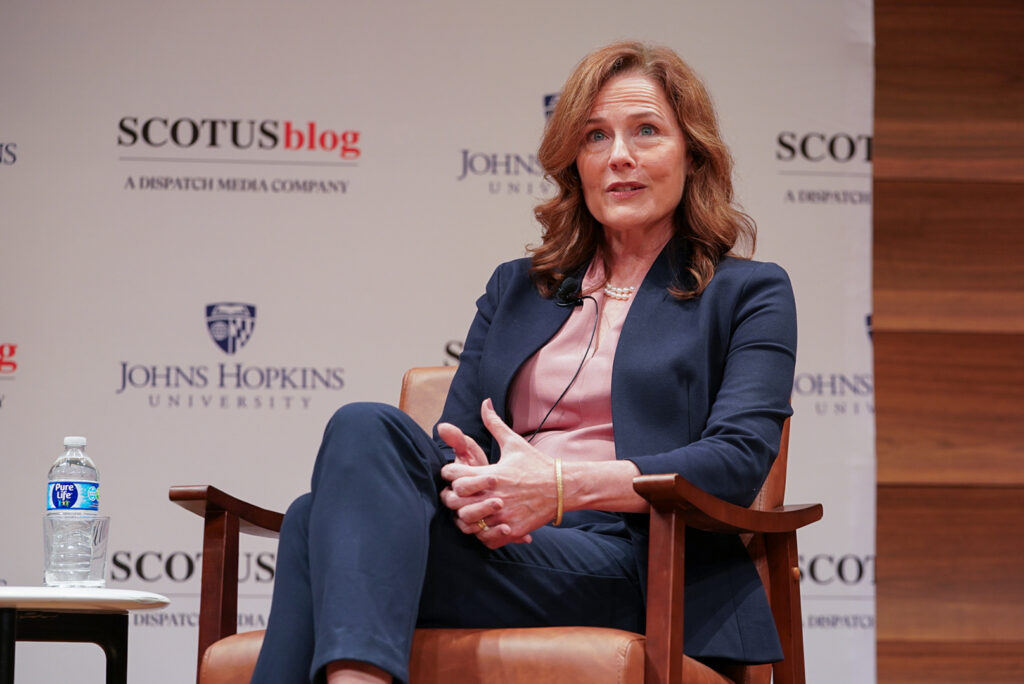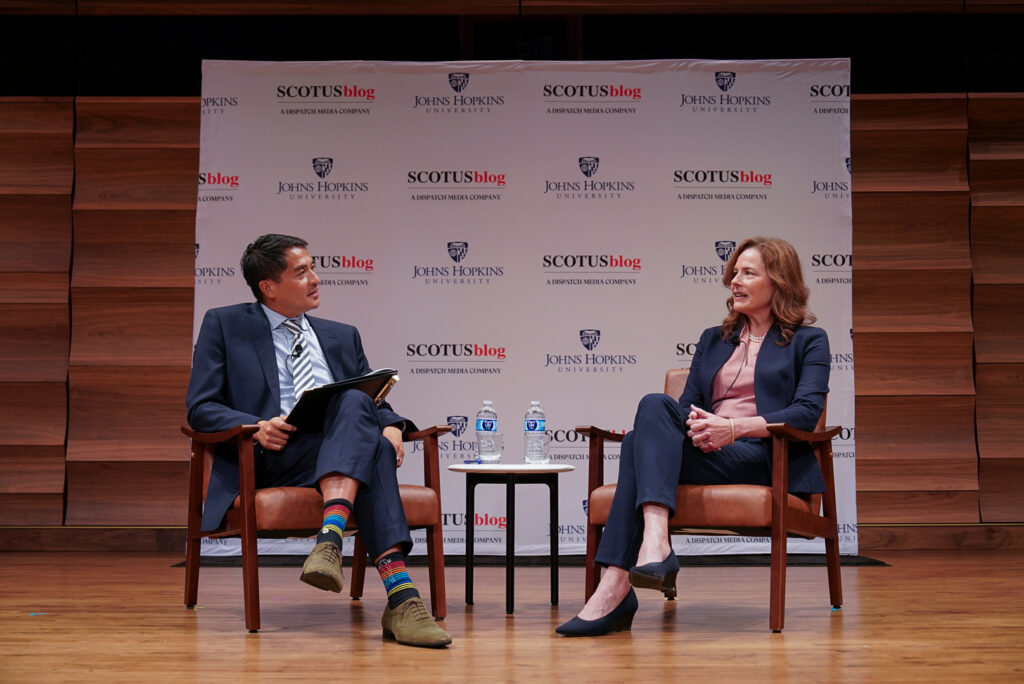5 things Justice Amy Coney Barrett wants Americans to know about the Supreme Court
The justice spoke at the Hopkins Bloomberg Center about her experience on the court, her judicial philosophy, and why she’s not a “swing justice.”

Associate Justice Amy Coney Barrett joined the U.S. Supreme Court five years ago, after what she called a “lowlight” of her career: her confirmation process.
Before her hearings, Justice Barrett boosted her confidence with a playlist her then college-aged daughter made for her. It featured Rodney Atkins’ song “If You’re Going Through Hell,” which says, “If you’re going through hell, keep on going.”
“That’s kind of what the confirmation process is like,” Justice Barrett said.
Now, after half a decade on the nation’s highest court, Justice Barrett has chronicled her experience so far in her new book, Listening to the Law, which she discussed at the SCOTUSblog On the Merits Summit, held at the Johns Hopkins University Bloomberg Center last month.
There, she also spoke about her background and legal philosophy. Here are five ideas she shared about originalism, judicial humility, and more.
- The one thing she wants people to know about Supreme Court rulings
Justice Barrett devoted a chapter of her book to explaining how she approaches making and writing decisions.
“I want people to appreciate it—in ways you can’t appreciate just from a hit in the news—that this is the result of legal analysis and not just knee-jerk policy preferences,” she said, adding that the court is engaged in a “legal enterprise,” not a political one like the two other branches of government.
- The difference between justices and politicians
Throughout the conversation, moderated by Judge Patrick Bumatay of the U.S. Court of Appeals for the 9th Circuit, Justice Barrett stressed that she’s uncomfortable with judges embracing “particular camps or labels.”
She noted that while politicians caucus together based on identity, judges do not. Similarly, she rejected the notion that she’s a “swing justice” who determines the court’s majority. The label, she said, wrongly implies that her rulings are inconsistent.
“I have a philosophy, and people might agree or disagree with either the philosophy or the result that I reach applying that philosophy in an individual case, but I don’t think of myself as a ‘swing justice.’” she said.

- The symbolism of the justices’ black robes
Barrett explained that the court’s tradition of wearing black robes dates back to John Marshall, the fourth chief justice. Before his tenure, justices often wore colored robes representing the schools they attended. Choosing plain black demonstrated that judges were not aristocrats and did not consider themselves above other branches of government.
For Justice Barrett, the robes still symbolize the court’s work.
“By dressing in black, we are all united in the business of the impartial interpretation of the law and application of the law,” she said.
- Why she’s an originalist
Like her mentor, the late Justice Antonin Scalia, Justice Barrett adheres to an originalist judicial philosophy. She defines it as interpreting the Constitution as it would have been understood by an “informed observer” at the time of its ratification.
“In my view, the ratified text is the law,” she said. “People enact law as they understand that law to be and as it will govern the governed. So I am an originalist because I think it’s the right way to think about the law.”
She added that while many originalists consider judicial restraint the foundation of the philosophy, she does not. For her, it means following the law as written, with judicial restraint as a “side benefit.”
“The exercise and the discipline of trying to focus on what the text means is a metric by which I have to be restrained,” she said.
- Looking beyond the Ivy League
A graduate of Notre Dame Law School, Justice Barrett is the only current justice who did not attend an Ivy League school. Before joining the court, she taught at Notre Dame and continues to do so now.
While she said she doesn’t think the court needs educational diversity for its own sake and doesn’t think she rules differently because of the law school she attended, it has shown her “there is talent everywhere… It’s a little bit elitist to think it can only be found at Harvard and Yale.”